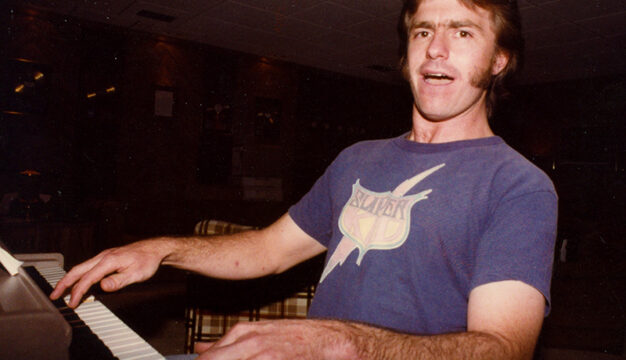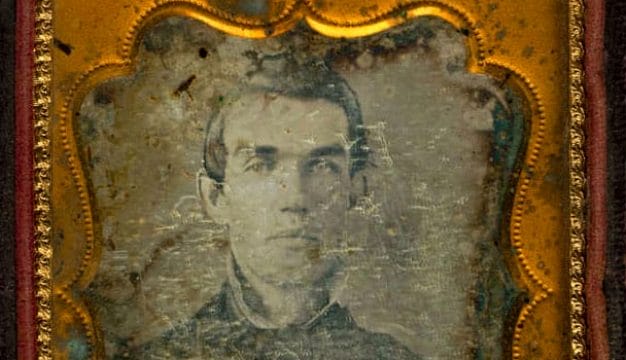Dorothy Sebastian
 Dorothy Sebastian
Actress Dorothy Sebastian (1903-1957) rose to stardom in Hollywood during the last years of the silent film era. A versatile entertainer, she performed briefly in New York prior to her move to Hollywood. She appeared in a variety of roles between 1925 and 1948 with such stars as Joan Crawford, Louise Brooks, Buster Keaton, and fellow Alabamian Johnnie Mack Brown. Nicknamed "Little Alabam" because of her short stature, Sebastian was noted for her winsome personality, artistic flair, and her enthusiasm for the free-spirited excesses of the Jazz Age. She was honored with a star on the Hollywood Walk of Fame in 1960.
Dorothy Sebastian
Actress Dorothy Sebastian (1903-1957) rose to stardom in Hollywood during the last years of the silent film era. A versatile entertainer, she performed briefly in New York prior to her move to Hollywood. She appeared in a variety of roles between 1925 and 1948 with such stars as Joan Crawford, Louise Brooks, Buster Keaton, and fellow Alabamian Johnnie Mack Brown. Nicknamed "Little Alabam" because of her short stature, Sebastian was noted for her winsome personality, artistic flair, and her enthusiasm for the free-spirited excesses of the Jazz Age. She was honored with a star on the Hollywood Walk of Fame in 1960.
 Dorothy Sebastian and Father
She was born Stella Dorothy Sabiston on April 26, 1903, in the Woodlawn district of Birmingham, Jefferson County, to Lycurgus Robert and Stella Armstrong Sabiston; she had three siblings. Her father was a clergyman, her mother was an accomplished artist, and her paternal grandparents were missionaries in China. As a child, Dorothy also wanted to become a missionary but, after being taken to the theater, aspired to be an actress and dancer. She briefly attended the University of Alabama, then secretly married high school sweetheart Allen Stafford on November 9, 1920, in Birmingham. The couple lived in Birmingham, where Stafford's family owned the White Swan Laundry. When the marriage ended in 1924, she changed her name to Dorothy Sebastian and moved to New York City to become a dancer.
Dorothy Sebastian and Father
She was born Stella Dorothy Sabiston on April 26, 1903, in the Woodlawn district of Birmingham, Jefferson County, to Lycurgus Robert and Stella Armstrong Sabiston; she had three siblings. Her father was a clergyman, her mother was an accomplished artist, and her paternal grandparents were missionaries in China. As a child, Dorothy also wanted to become a missionary but, after being taken to the theater, aspired to be an actress and dancer. She briefly attended the University of Alabama, then secretly married high school sweetheart Allen Stafford on November 9, 1920, in Birmingham. The couple lived in Birmingham, where Stafford's family owned the White Swan Laundry. When the marriage ended in 1924, she changed her name to Dorothy Sebastian and moved to New York City to become a dancer.
For six months, at $55 per week, Sebastian performed as a chorus girl in "George White's Scandals," a popular musical stage revue that was similar to but more risqué than the more famous Ziegfeld Follies. While working for White, Sebastian met Max Aitken, Lord Beaverbrook, a famous British newspaper magnate and cabinet minister, at a party hosted by banker and philanthropist Otto Kahn at the Ritz Hotel. According to a memoir by fellow actor Louise Brooks, Sebastian exchanged sexual favors with Aitken in return for him arranging a screen test with Paramount producer Henry King for his Western silent film Sackcloth and Scarlet (1925).
 Winds of Chance
Sebastian won a leading role, and her successful film debut led to a five-year contract with Metro-Goldwyn-Mayer Studios (MGM). She compiled a score of minor roles in which she was often cast as a vamp or a hard-boiled "other woman", with the exception of A Woman of Affairs (1928) with Greta Garbo, in which she played the wholesome wife of a cheating husband. She acted in several films with Western star Johnny Mack Brown and co-starred in a series of romantic dramas with Joan Crawford: Our Dancing Daughters (1928), Montana Moon (1930), and Our Blushing Brides (1930). Sebastian and Crawford became lifelong friends and party regulars. Sebastian's most notable role from this era was her starring role in Spite Marriage (1929) with "stone-faced" comedian Buster Keaton, with whom she would become romantically involved off screen for many years. When talking films put an end to the silent era, Sebastian successfully made the transition and acted in more than 30 more films, but her only leading role was in They Never Come Back (1932).
Winds of Chance
Sebastian won a leading role, and her successful film debut led to a five-year contract with Metro-Goldwyn-Mayer Studios (MGM). She compiled a score of minor roles in which she was often cast as a vamp or a hard-boiled "other woman", with the exception of A Woman of Affairs (1928) with Greta Garbo, in which she played the wholesome wife of a cheating husband. She acted in several films with Western star Johnny Mack Brown and co-starred in a series of romantic dramas with Joan Crawford: Our Dancing Daughters (1928), Montana Moon (1930), and Our Blushing Brides (1930). Sebastian and Crawford became lifelong friends and party regulars. Sebastian's most notable role from this era was her starring role in Spite Marriage (1929) with "stone-faced" comedian Buster Keaton, with whom she would become romantically involved off screen for many years. When talking films put an end to the silent era, Sebastian successfully made the transition and acted in more than 30 more films, but her only leading role was in They Never Come Back (1932).
 His First Command, 1929
In addition to her film work, Sebastian often attracted press attention for her boisterous off-screen lifestyle. In addition to her affair with the married Keaton, she was romantically involved with, and briefly engaged to, MGM director Clarence Brown. In 1929, Sebastian began a relationship with the married William Boyd when the two were filming His First Command (1929). Boyd divorced his wife, and he and Sebastian eloped to Las Vegas and were married on December 19, 1930. Their six-year marriage was turbulent as her career began to stagnate while Boyd's fame and adulation increased through his popular portrayal of fictional cowboy hero Hopalong Cassidy. Following an acrimonious divorce in May 1936, Sebastian continued her fast-paced partying lifestyle.
His First Command, 1929
In addition to her film work, Sebastian often attracted press attention for her boisterous off-screen lifestyle. In addition to her affair with the married Keaton, she was romantically involved with, and briefly engaged to, MGM director Clarence Brown. In 1929, Sebastian began a relationship with the married William Boyd when the two were filming His First Command (1929). Boyd divorced his wife, and he and Sebastian eloped to Las Vegas and were married on December 19, 1930. Their six-year marriage was turbulent as her career began to stagnate while Boyd's fame and adulation increased through his popular portrayal of fictional cowboy hero Hopalong Cassidy. Following an acrimonious divorce in May 1936, Sebastian continued her fast-paced partying lifestyle.
 Dorothy Sebastian and Herman Shapiro
Sebastian soon resumed her relationship with Keaton, who shared her love of practical jokes, companionship, and alcohol. Indeed, she became known by the nicknames "Slam Bang Sebastian," "Slambastian," or "Slam" for her tendency to get falling-down drunk. In November 1937, she was arrested for drunk driving after leaving Keaton's house. After a witness contradicted Sebastian's alibi that her nephew was driving when her car collided with another vehicle, she reportedly told police that garlic in the spaghetti she had consumed accentuated the smell of the small amount of wine she had consumed. Convicted, Sebastian was given a suspended 30-day jail sentence on the condition that she abstain from drinking for a year, not drive for 30 days, report monthly to a probation officer, and pay a $75 fine. Sebastian was also fined for falsifying information on her 1928 tax return. A final publicized legal entanglement involved her failure to pay her $103.31 bill at the Plaza Hotel in San Diego, where she had appeared at a Red Cross flood relief benefit in 1937. She was cleared of charges of defrauding an innkeeper, and her countersuit for malicious prosecution resulted in a $10,000 award by the Supreme Court of California.
Dorothy Sebastian and Herman Shapiro
Sebastian soon resumed her relationship with Keaton, who shared her love of practical jokes, companionship, and alcohol. Indeed, she became known by the nicknames "Slam Bang Sebastian," "Slambastian," or "Slam" for her tendency to get falling-down drunk. In November 1937, she was arrested for drunk driving after leaving Keaton's house. After a witness contradicted Sebastian's alibi that her nephew was driving when her car collided with another vehicle, she reportedly told police that garlic in the spaghetti she had consumed accentuated the smell of the small amount of wine she had consumed. Convicted, Sebastian was given a suspended 30-day jail sentence on the condition that she abstain from drinking for a year, not drive for 30 days, report monthly to a probation officer, and pay a $75 fine. Sebastian was also fined for falsifying information on her 1928 tax return. A final publicized legal entanglement involved her failure to pay her $103.31 bill at the Plaza Hotel in San Diego, where she had appeared at a Red Cross flood relief benefit in 1937. She was cleared of charges of defrauding an innkeeper, and her countersuit for malicious prosecution resulted in a $10,000 award by the Supreme Court of California.
During World War II, Sebastian worked as an x-ray technician at a defense plant and continued to act in minor roles. At this time, she met and married her third husband, Herman Shapiro, an aircraft technician; the couple would buy and manage the Henrosa Hotel in Miami Beach for several years after their marriage. Sebastian died of cancer on April 8, 1957, at the Motion Picture Country House in Woodland Hills and was buried at Holy Cross Cemetery in Culver City, California. Her Hollywood star is located at 6655 Hollywood Blvd.
Although Dorothy Sebastian starred in numerous films and had minor roles in many more productions during the interwar period, she was never one of Hollywood's top celebrities. Like so many other actors and actresses of her generation, she became a victim of the studio contract system. When her five-year contract with MGM was not renewed after she requested a raise, Sebastian's opportunities dwindled, and the press focused more frequently on her turbulent social life. Like her better-known co-stars Joan Crawford, Buster Keaton, Louise Brooks, she loved dinner parties, fashionable clothes, jewelry, furs, and fine perfume and was part of the social circle that helped create the popular mythology of "Tinseltown." Movie fans loved to read about what was going on behind the scenes in that period, and Sebastian played an important role in shaping its image.
Additional Resources
Gwaltney, Caroline. "You Ought to Be in Pictures," Alabama Alumni Magazine 88 (Spring, 2008); https://alumni.ua.edu/blog/magazine_stories/you-ought-to-be-in-pictures.
Paris, Barry. Louise Brooks. New York: Alfred A. Knopf, 1989.



